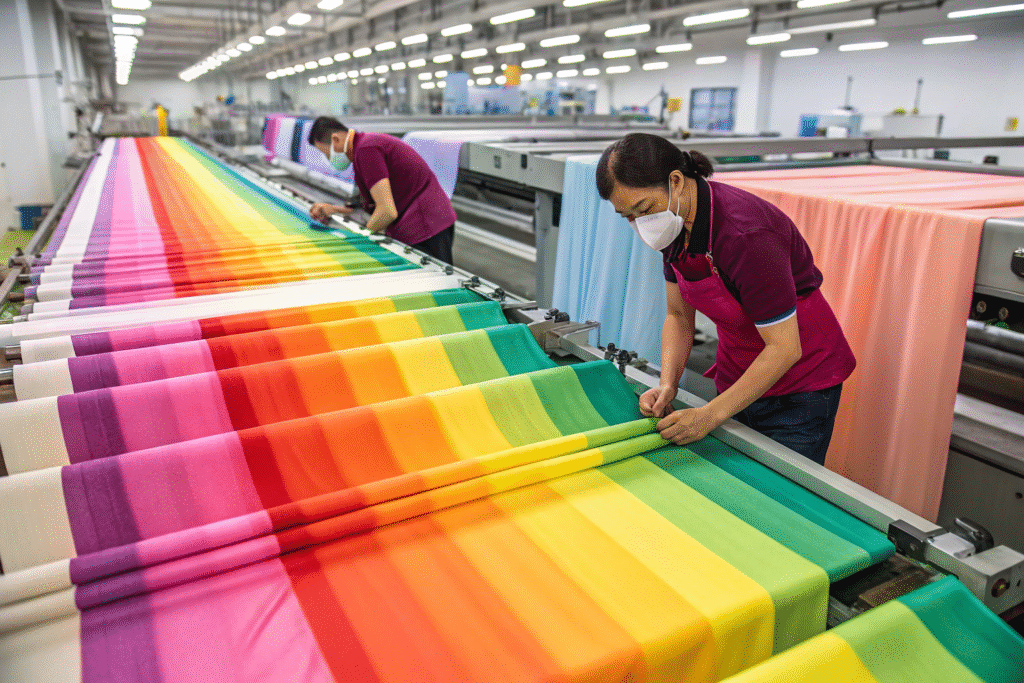Gradient scrunchies have become a global fashion favorite, blending multiple shades into one accessory for a dreamy, eye-catching look. But achieving perfect color matching for such a product is not as simple as dipping fabric into dye. For international buyers—especially those working with factories in China—consistent gradient results require advanced equipment, rigorous testing, and skilled craftsmanship.
As a factory owner in the hair accessories industry, I know firsthand that the process is a fine balance between science and artistry. From selecting the right fabrics to ensuring exact pantone matches across bulk orders, factories use a combination of traditional dyeing expertise and modern technology to deliver flawless products to clients worldwide.
This article will break down exactly how professional manufacturers like us manage color matching for gradient scrunchies, from concept to shipping.
Color Theory and Material Selection for Gradient Fabrics
Choosing the right colors for a gradient scrunchie starts long before the dyeing process. Factories must consider how colors blend on specific materials, how they look in different lighting conditions, and how they will hold up over time.
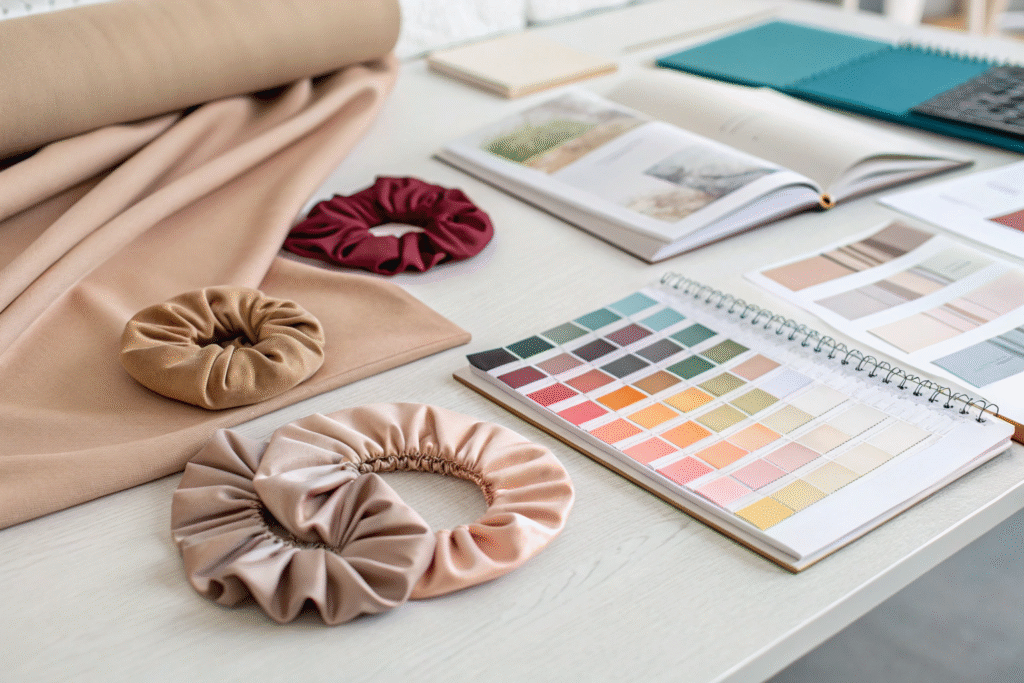
What fabric properties affect gradient color blending?
When creating gradient scrunchies, material choice is critical. Satin offers a glossy finish that enhances color transitions, while chiffon delivers a softer, airy blend. Cotton, though less common in luxury markets, absorbs dye more predictably, making it easier to achieve even gradients.
In our factory, we test fabric absorption rates by using a color spectrophotometer (see example) to measure how closely the sample matches the intended Pantone value. We also check light fastness following ISO textile testing standards to ensure the scrunchie’s colors remain vivid after sun exposure.
How do factories choose the best color combinations?
A well-designed gradient scrunchie needs colors that transition harmoniously. Many factories use Pantone Color Bridge tools to select complementary or analogous colors. Our design team also refers to seasonal fashion trend forecasts from sources like WGSN to ensure the gradient aligns with upcoming global trends.
Sometimes, buyers send us mood boards, and we’ll develop lab dips (small dyed fabric samples) with three or four gradient variations for them to approve before mass production.
Precision Dyeing Techniques for Gradients
Perfect gradient dyeing is a combination of machine calibration, timing control, and skilled manual work. Factories use specialized techniques to ensure smooth transitions and accurate color reproduction.
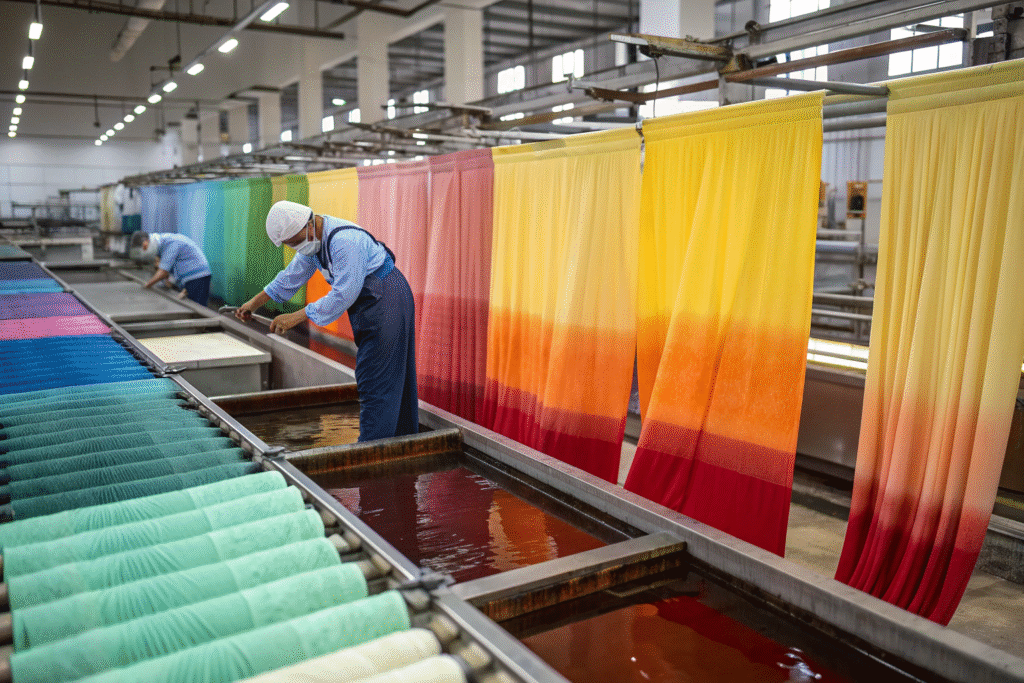
How does dip-dyeing work for scrunchies?
Dip-dyeing is the most common method for creating gradients. The fabric is gradually lowered into a dye bath at precise time intervals, allowing the dye to penetrate more deeply in certain sections. Our production team uses automated lowering systems (similar to this) to keep timing consistent across hundreds of pieces.
We also monitor bath temperature and pH levels, as these affect dye uptake. Even a small variation can cause noticeable differences in the gradient.
Can digital printing replace traditional dyeing for gradients?
Yes, digital sublimation printing can reproduce complex gradients with photographic precision, especially on polyester-based fabrics. This method eliminates dye bleeding and ensures 100% consistency. However, it’s not always cost-effective for small MOQ orders.
For example, a buyer ordering 300 scrunchies might choose dip-dyeing to keep costs lower, while a brand ordering 5,000+ might opt for sublimation for perfect repeatability. See this guide on sublimation printing for technical details.
Quality Control and Color Verification
Ensuring that every scrunchie in a shipment matches the approved sample is crucial for maintaining buyer trust. Factories implement multi-stage QC processes to catch color inconsistencies before products are packed.
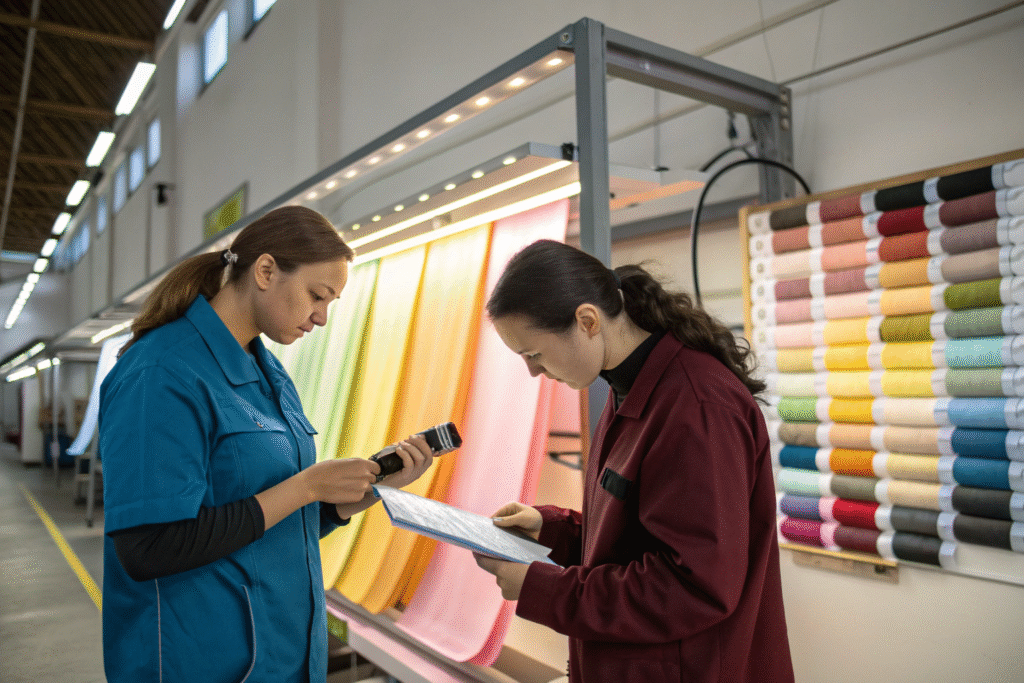
How do factories verify gradient accuracy?
We use a D65 daylight simulator to compare production batches against the approved master sample. This lighting condition mimics natural daylight and prevents color shifts caused by fluorescent or LED lights.
We also log spectrophotometer readings for each lot and compare them with the approved Pantone codes (Pantone’s official guide can be a reference here). Any batch outside a ±1.0 ΔE (Delta E) color difference is flagged for rework.
What happens when color mismatches occur?
If mismatches are minor, we may re-dye the affected section or blend it into the existing gradient. For severe mismatches, fabric is reprocessed entirely. Buyers are informed immediately, and new delivery timelines are proposed. This transparency builds long-term trust, especially with clients in markets like the US and EU where quality standards are strict. See SGS textile testing services for reference on compliance requirements.
Logistics and Communication with Buyers
Beyond production, effective communication and shipping management are essential to delivering consistent products on time.
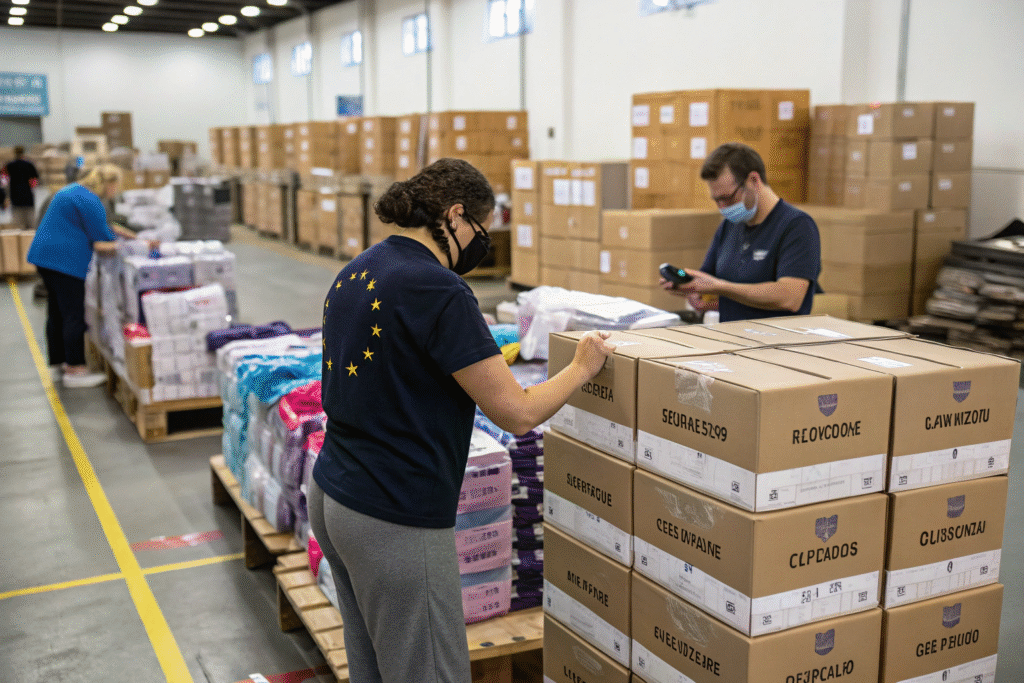
How do factories keep buyers updated during production?
We share progress photos and videos during key stages: lab dips, first bulk batch, mid-production QC, and pre-shipment inspection. We also send DHL or FedEx color swatch samples so buyers can confirm the colors in person before the rest of the order is completed.
Platforms like Alibaba Trade Assurance or private ERP systems help streamline communication and documentation.
How does shipping affect gradient colors?
While the dye itself won’t change during transit, humidity and temperature variations can affect fabric hand feel. For sensitive materials like silk, we use moisture-absorbing packets and sealed polybags. This ensures the scrunchies arrive looking just as they did in our QC room. For international logistics advice, see Freightos guide.
Conclusion
Color matching for gradient scrunchies is a science, an art, and a business discipline all in one. By combining the right fabric choice, precision dyeing methods, rigorous QC, and transparent buyer communication, factories can deliver consistently stunning products that meet the high expectations of global fashion markets.
If you are planning to create your own line of gradient scrunchies—or any other hair accessories—Shanghai Fumao can provide OEM & ODM services with guaranteed quality and on-time delivery. Contact our Business Director Elaine at elaine@fumaoclothing.com to discuss your project today.

